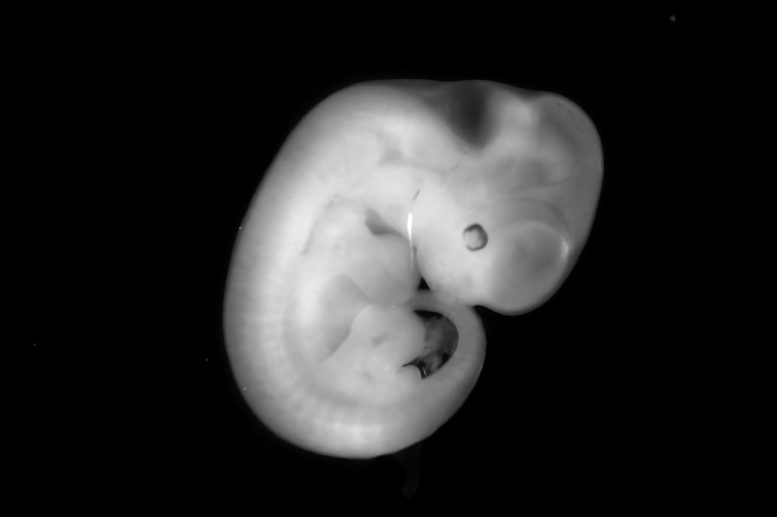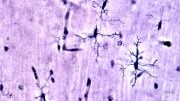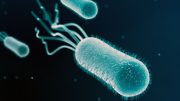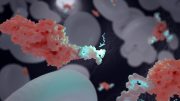
Mouse embryos, like the one depicted here, die in utero if they are missing the choline transporter FLVCR1. But giving them supplemental choline can increase their lifespan. Credit: Laboratory of Metabolic Regulation and Genetics at The Rockefeller University
Proteins integrated into the cell membrane play a crucial role in transporting nutrients to the intended destination within our cells. If this transportation system malfunctions and metabolites are unable to reach their target, it can have adverse effects on human health, ranging from rare illnesses to neurodegenerative disorders and even cancer. A deeper comprehension of how metabolites are transported into cells could pave the way for potential therapies for diseases associated with metabolite transportation.
But matching which proteins transport which nutrients has proven difficult—to date, some 30 percent of carrier proteins have yet to be mapped back to their nutrients. Now, a new study reveals the protein responsible for transporting choline into the cell. The findings, published in Cell Metabolism, may have immediate implications for people living with posterior column ataxia with retinitis pigmentosa (PCARP), a disease caused by a mutation in this transporter protein.
“You can get supplemental choline over-the-counter—it’s easily administered and patients can tolerate fairly high levels of it,” says Timothy Kenny, a postdoctoral fellow in the laboratory of Kivanc Birsoy at Rockefeller. “Our findings could be easily translated into the clinic.”
The results may also pave the way for further discoveries that chip away at the inner workings of other transport proteins and diseases that are linked to their dysfunction. “The whole study is a proof of concept,” Birsoy says. “By systematically identifying so-called ‘orphan’ transport proteins, we can solve mysteries not only in human biology but also in human health.”
A metabolite in a haystack
There are about 5,000 different metabolites in human blood, and scientists still do not know how many of them enter cells. Determined to change that, Birsoy, Kenny, and colleagues began investigating transport proteins. The team took a uniquely broad approach to the problem and scoured scores of studies mapping associations between transporters and metabolites across the entire human genome. Casting a wide net bore fruit, and one metabolite—choline—was shown to be very strongly associated with a membrane transport protein known as FLVCR1.
“Within our data, one could actually pull out multiple transport proteins linked to specific metabolites,” Birsoy says. “We chose to focus on choline because it had the strongest signal.”
Choline was also an appealing choice because of the bevy of diseases associated with its deficiency. “Choline is a key component of cell membranes and neurotransmitters, so it’s biologically important, and choline deficiency is also associated with fetal alcohol spectrum disorders, neurodegeneration, liver disease, and some cancers,” Birsoy says.
The fact that prior studies have noted a link between FLVCR1 mutations and PCARP (which results in vision problems, muscle weakness, and difficulties with spatial orientation) only sharpened the team’s sense that they had hit on a possible pairing with important implications.
Confirming choline
Birsoy and colleagues then conducted a series of experiments to definitively demonstrate that FLVCR1 was indeed the transporter in question. They found that mice without FLVCR1 die in utero (but live longer if given supplemental choline), and that human cells missing the gene that produces FLVCR1 are not only choline-deficient, but also can have their metabolism corrected with the equivalent gene in flies—a demonstration of just how fundamental to life the gene must be.
Moreover, the experiment with mouse embryos provided evidence that FLVCR1 mutations may be treatable with supplemental choline. If that holds in humans, that would mean that it may make more sense to provide PCARP patients’ missing choline through a dietary supplement than to try to fix the transporter that should have been bringing choline into their cells.
“Scientists knew that PCARP was linked to FLVCR1, but they didn’t know that FLVCR1 was linked to choline, so providing supplemental choline for PCARP patients was not even considered,” Kenny says. “This is an example of how basic biology allows us to rationally design therapies.”
Meanwhile, the Birsoy lab intends to use the method described in this study to identify more mystery connections between metabolites and transporters. “Given that many transporters are associated with diseases and drug targets, identifying these transporters is a top priority,” Birsoy says. “We have now devised one important strategy for accomplishing this.”
Reference: “Integrative genetic analysis identifies FLVCR1 as a plasma-membrane choline transporter in mammals” by Timothy C. Kenny, Artem Khan, Yeeun Son, Lishu Yue, Søren Heissel, Anurag Sharma, H. Amalia Pasolli, Yuyang Liu, Eric R. Gamazon, Hanan Alwaseem, Richard K. Hite and Kıvanç Birsoy, 25 April 2023, Cell Metabolism.
DOI: 10.1016/j.cmet.2023.04.003









how are you, primary blog on lardy loss. such a one helped.